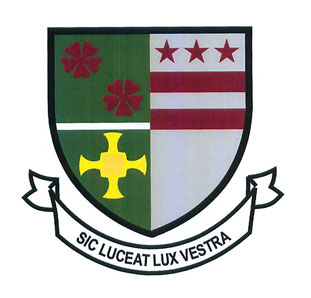



 St Robert of Newminster Catholic School
St Robert of Newminster Catholic Schooland Sixth Form College
United Kingdom
Thinking Maps and School Effectiveness
A Study of a UK Comprehensive School
Conclusion
It was the intention of this study to examine the role of Thinking Maps® in the transformation of teacher and pupil effectiveness at St Robert of Newminster Catholic School and Sixth Form College.
We hoped that our research would show that due to the implementation of Thinking Maps®, teacher collaboration and conversation are more focussed and that these new dispositions and skills lead to the development of common understandings, beliefs and practices about teaching for learning.
The results of our lesson observations demonstrate that the use of Thinking Maps® facilitate a greater percentage of time spent on activities that promote higher order thinking. Although 16 lessons constitute a relatively small sample, these results are encouraging and suggest that where Thinking Maps® are being used, students have more consistent access to higher order thinking skills.
Staff evaluations of previous and current teaching methodologies demonstrated that existing effective pedagogical practices remain integral to the lesson. However, staff indicated that the implementation of Thinking Maps® has enhanced their effectiveness by developing: a common thinking tool used for purpose; students’ access to a more effective planning tool; the sharing and visualisation of thinking. As previously concluded, staff indicate that the use of Thinking Maps® facilitate higher order thinking skills.
Book sampling revealed that maps are only being used when there is a genuine opportunity in the lesson. This supports the premise that certain Thinking Maps® appear to be subject-specific and fit for purpose.
Staff and student perceptions of Thinking Maps® were mainly positive. Results illustrate that the maps have been well received and are on the whole, considered as effective tools to develop and support higher order thinking.
Finally, we aimed to test whether as a direct consequence of introducing Thinking Maps® as a whole school strategy, the change in teacher instructional methodology led to a rise in pupil achievement. Evidence presented is mainly anecdotal. The quality of essay writing appears to have improved as a result of maps being used as a planning tool and students participating in Thinking Map® activities appear to have an improved on task behaviour. In two subject areas, some quantitative data has indicated that the use of Thinking Maps® have contributed to improved student outcomes.
The Case Study sections are accessible in the links below and in the upper left column menu on each page of the St Robert Case Study.
- Project Overview
- Teacher Instructional and Higher Order Thinking Levels
- Teacher Methodologies
- Consistency and Frequency of Use
- Teacher Perceptions of Thinking Maps®
- Analysis of Pupils' Perceptions of Themselves as Learners
- Teacher Collaboration, Communication and Problem Solving
- Impact of Thinking Maps®
- Conclusion
- Video Clips
- Download Acrobat PDF copy of St. Robert Case Study